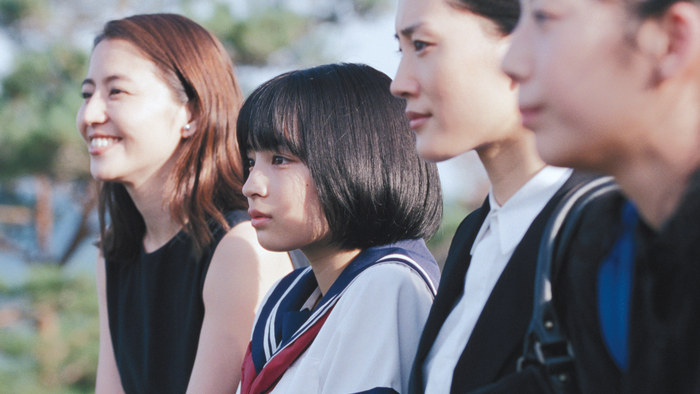Director: Hirokazu Kore-eda
Starring: Haruka Ayase, Masami Nagasawa, Kaho, Suzu Hirose.
Our Little Sister (or Seaside Town Diary, as directly translated from Japanese) is a poignant film that transforms the domestic microcosm of four young women into an enormously triumphant and spiralling family drama. Directed by perhaps the leading exponent of the boutique family drama, Hirokazu Kore-eda’s work reappropriates Akimi Yoshida’s manga series to present a fresh take on the complexities of sisterhood. With a rare and delicate sensibility, the film tells the story of three adult sisters who assume custody of their teenaged half-sister after the death of their adulterous father.
Having already debuted internationally to significant acclaim at both the 2015 Cannes and Toronto Film Festivals (and garnered such domestic honours as the 2016 Japanese Academy Prizes for Picture, Rookie of the Year and Director of the Year) I was intrigued to see what all the fuss was about; how could a film so understated in concept and intention be making such large waves? The answer is all in Kore-eda’s execution – the imagery is basic but highly evocative, culminating in the creation of a feminine Japanese domesticity that, whilst alien to Western viewers, is rendered with such honesty that it creates an overwhelming sense of familiarity.
As the 2016 Japanese Academy Rookie of the Year, Hirose is excellent in her portrayal of her affable namesake. Her traversal of delicate subject matter is achieved with a wide-eyed naivety that is not only utterly believable but truly endearing; the audience never for a moment doubts the motivations of Hirose’s Suzu, even when their integrity is questioned by her half-sisters. The pervasive melancholy the film exudes is at its most heart-wrenching when confronting issues of self-hatred. Suzu’s struggle with her own existence is utterly compelling; seeing herself as no more than the result of her father’s traitorous pity, she laments herself as both product and reminder of a deep-seeded family fracture.
The motif of cherry blossoms is a technique of particular note: whilst these fragile flowers have become almost emblematic of Japanese culture, Kore-eda uses them in a far more polysemic manner. The en masse blooming of Japanese cherry blossoms is traditionally associated with the Buddhist influence in the region, functioning as symbol of life’s ephemerality. Their exquisite beauty and volatility is often associated, as it is in this film, with a graceful acceptance of mortal destiny and the preciousness of life’s simple pleasures. For these four sisters, the blossoms trigger fantasies of bourgeoning adolescent romance and newfound love of self and of family, all set against the bitter nostalgia of their upbringing, and much must be said about the skill with which Ayase, Kaho, Nagasawa and Hirose render the universality of their emotions through body language, gaze and inflection.
The eldest daughter, Sachi, acts as the matriarch of a family; her dual role as eldest sister and anxious mother-figure is a riveting embodiment of the conflicting imperatives of womanhood in post-modern Japan. An intriguing scenario arises as the central ethical dilemma of the film, whereby Sachi finds herself in a position not dissimilar to that of her estranged mother-in-law. Dating a married man who is unable to bring himself to divorce his depressed wife, Sachi must decide whether to move to America with him and desert her (rather hapless) sisters, in the process breaking up a marriage in much the same manner as she and her siblings were victim to some decade earlier. This dramatic irony and intra-character conflict provides the major moral and thematic provocation of the film, and Ayase is fantastic as the beautiful (and utterly terrifying) Sachi.
Perhaps the only flaw in the technical execution of the Kore-eda’s drama is a finale that falls slightly flat by comparison to potential pathways of conclusion that present themselves to the viewer — there is a pervasive sense of missed opportunity as the film draws to its candid closure.
The patience with which the film is built is admirable, a slow and deliberate shaping that inspires the willing viewer to relish each moment for both its aesthetic and thematic significance. In an era of film dominated by heavy-handed and often coercive attempts at emotional resonance, Our Little Sister shines as an example of the power of dramatic minimalism: the pleasures it brings are simple, its truths lovingly whispered in your ear.
‘Our Little Sister’ runs as part of PIAF’s Lotterywest Festival Films until April 10. Tickets available here.

